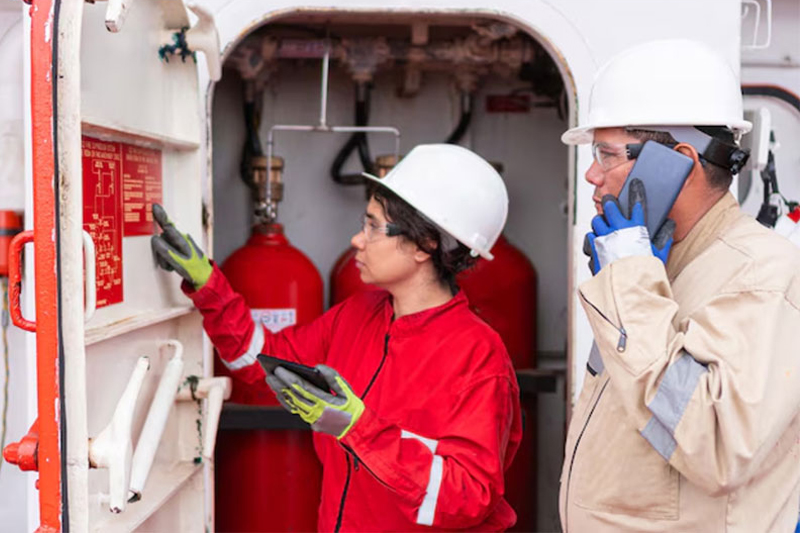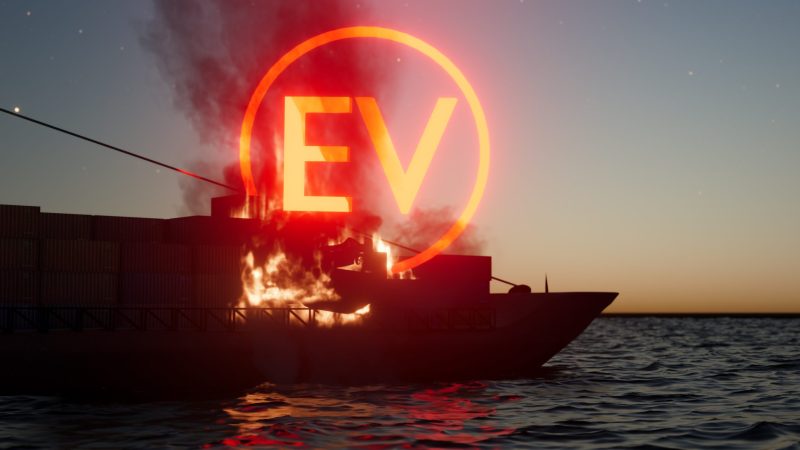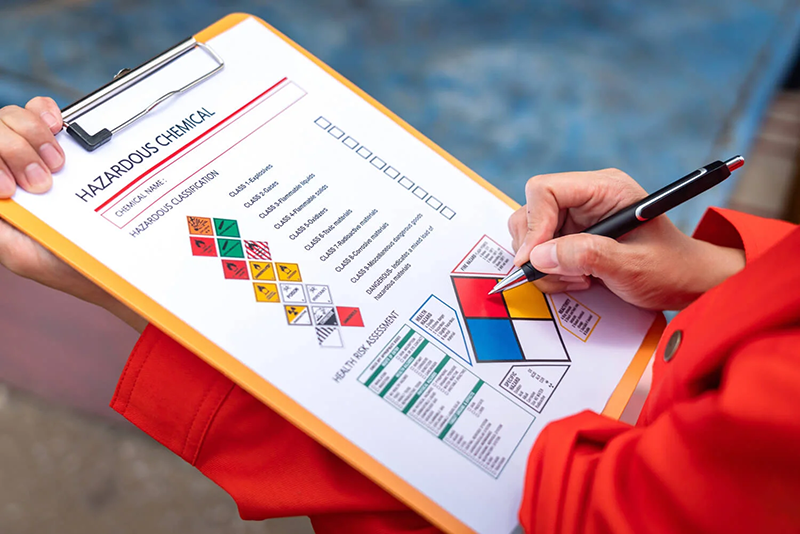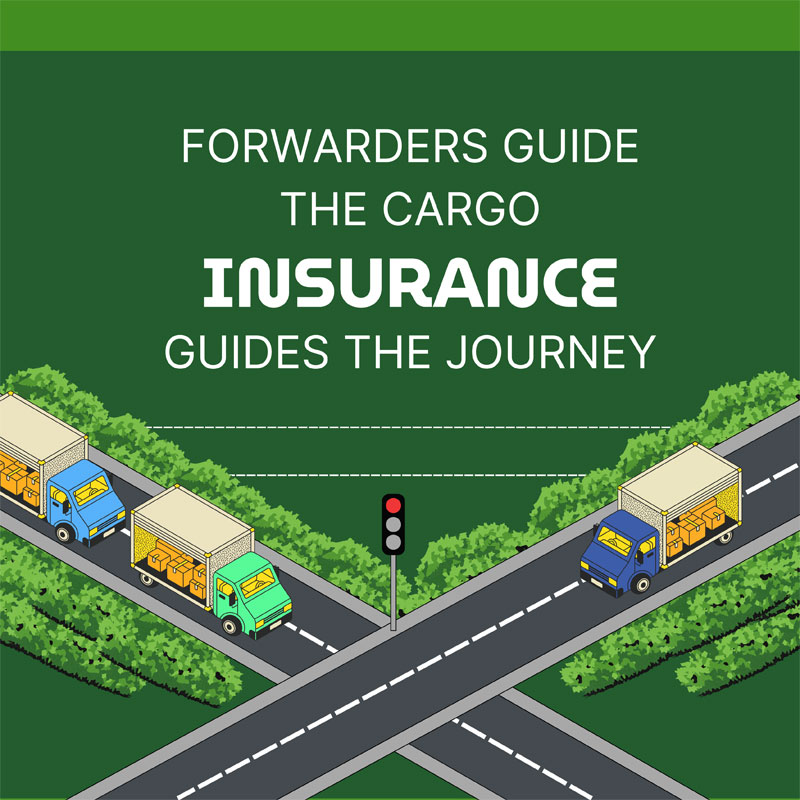15 OCTOBER, 2025
TRANSPORT LITHIUM BATTERIES SAFELY – A RISK & INSURANCE PERSPECTIVE FOR FREIGHT FORWARDERS
 Freight forwarders and safety teams work hand in hand to ensure every shipment meets compliance and insurance standards.
Freight forwarders and safety teams work hand in hand to ensure every shipment meets compliance and insurance standards.
Thanks for visiting us at MIAPEX 2025.
If we missed you at the booth, here’s Aktiv ASPAC’s recap on how freight forwarders, shippers, and logistics players can manage the growing risks around lithium battery shipments — and how compliance and insurance work hand in hand to keep movements safe and insurable.
You’re just doing your job. But in today’s fast-changing maritime world, where there are lithium-ion batteries in almost every gadget and electric vehicle sales are booming, you can be directly exposed, personally blamed if the batteries are mis-declared, poorly packed, or damaged in transit. In this article, we take an insurance perspective for freight forwarders, discussing how to transport lithium batteries safely and what you can do to protect yourself and your clients.
As you’ll see, insurance plays a vital role in protecting these movements and ensuring compliance. While we’re not compliance experts, it’s clear that where Li-ion batteries are concerned, compliance and insurance go hand in hand.
WHY IT’S IMPORTANT TO KNOW HOW TO TRANSPORT LITHIUM BATTERIES SAFELY
The world’s shipping losses have plummeted by 50% in the last ten years, making shipping safer than ever. But there’s a cloud on the horizon, with unusual numbers of ships catching fire when carrying lithium-ion batteries — either as cargo in their own right, destined for electric bikes, mobile phones, and so on, or actually inside EVs.
EXAMPLES OF LI-ON BATTERY FIRES ON BOARD SHIPS
In February 2022 the Pure Car and Truck Carrier (PCTC) MV Felicity Ace caught fire in the Atlantic Ocean, near the Azores. It was carrying 4,000 vehicles from Germany to the USA, many of them expensive EVs. It took more than a week to put out the blaze and she sank while being towed, a total insurance loss.
The MV Fremantle Highway sank in July 2023, this time in the North Sea off mainland Europe. One crew member died, several were injured, and the fire burned for days.
In December the same year the MV Istra Ace caught fire in the North Atlantic, diverting to the Azores once the fire was put out. The MV Genius Star XI and MV Kaimana Hila followed. From 2012 to 2021, fires caused 120 out of 892 reported losses at sea, and between January 1, 2017 and December 31, 2021, fire cost the sector a total €9.2bn (≈RM46.9bn).
 A string of Li-ion battery fires has reshaped global shipping safety priorities.
A string of Li-ion battery fires has reshaped global shipping safety priorities.
WHAT SHIPPERS AND INSURANCE COMPANIES ARE DOING ABOUT IT
Insurance companies are coming up with a collection of recommendations to make transporting these batteries and the products they’re fitted inside safer. Specific training, for example, means everyone involved will know exactly what to do, and improved pre-sail stability checks will add another layer of defence.
Accurate cargo information, improved cargo loading and securing procedures, and flexible routes for vulnerable ro-ro and car carrier routes will make a difference, as will regular checks for battery damage, overcharging, short-circuiting and overheating. The highest standards of fire detection and on-board firefighting training are a must.
Manufacturers’ recommendations are there for a good reason — to ensure batteries stay safe and data remains up to date. For EVs, battery type should be displayed on each vehicle’s windshield, and vehicles with low ground clearance should be labelled. 24/7 watchkeeping and fire checking make a difference, as do thermal scanners, gas detectors, heat detectors, smoke detectors, and CCTV.
Creating Emergency Response Plans and training key employees make sense. Hazard Control Planning will help manage the receiving, storage, dispatch, and supervision side of packaged batteries. On-shore, pre-emergency planning with local fire departments and on-site fire brigades can make a difference.
Batteries should be stacked in designated areas, to safe heights, with at least 3m of space between them and other combustible materials when there isn’t an automatic fire extinguishing system nearby. Batteries shouldn’t be stacked on racks unless there’s a sprinkler system, plus solid vertical and horizontal metal barriers between storage bays.
It’s wise to install gas detection for CO₂ concentration, shock/impact sensors, and vibration sensors for all large-format batteries. Last but not least, it makes sense to remove all damaged or defective Li-ion batteries immediately.
A FREIGHT FORWARDER’S RESPONSIBILITY
Basically, to move lithium batteries and other dangerous goods safely, you need a licensed logistics company that meets all the right compliance parameters. If you’re overseeing shipments that include lithium batteries, ensure your logistics partners follow the latest certified guidelines for packing and documentation.
Make sure your paperwork is 100% correct, accurately describing and documenting the cargo. Choose a reputable carrier — an experienced shipper who knows exactly how to manage the risks.
You’ll probably want to check their processes and procedures for yourself, or ask a fellow freight forwarder with experience in transporting Li-ion batteries to make a recommendation.
Make sure you have enough good quality freight forwarders liability insurance in case something goes wrong. It usually covers physical damage or loss of goods during transit, Customs liabilities against unexpected costs, fines, and delays because of mistakes in the paperwork, and legal expenses and claims from third parties for bodily injury or damaged property. It covers penalties for regulatory breaches enforced by the port authorities at either end, as well as unclaimed or abandoned cargo losses.
Problems from essential operational activities like storage and distribution are covered, as are unforeseen accidents and hazards like fires and explosions, and other unforeseen events. Last but not least, it includes Employee and Personal Injury Support to cover claims from workplace injuries.
 Compliance starts with documentation. Every declaration, checklist, and certification helps keep high-risk cargo safe — and insurable.
Compliance starts with documentation. Every declaration, checklist, and certification helps keep high-risk cargo safe — and insurable.
It’s also important to buy the right amount and type of marine cargo insurance to cover the goods in transit, financial loss from damage or loss, and specialist protection like General Average, which lets cargo owners share responsibility.
CAN WE HELP MANAGE THE RISKS OF LI-ON BATTERY TRANSPORTATION?
Now you understand more about the insurance and compliance aspects of how to transport lithium batteries safely. You might appreciate some expert support. Because we understand how the insurance aspect of freight forwarding works, we can advise you about the risks. We’re always happy to talk things through, so feel free to contact us.
DIDN’T MAKE IT TO MIAPEX 2025?
If you missed visiting Aktiv ASPAC at the expo but would like to learn more about how licensed, compliant operators and the right insurance protection work hand in hand to make cargo movements safer, please fill out our short enquiry form below. Our team will be in touch to share relevant insights or arrange a discussion tailored to your business needs.
Get in TouchSources
https://commercial.allianz.com/news-and-insights/reports/lithium-ion-batteries.html
https://chat.deepseek.com/ (list of reported Li-ion battery fires at sea since 2021)
NOT UP-TO-DATE WITH OUR MONTHLY ARTICLES? FIND ISSUES HERE
IF IT CAN HAPPEN THERE, IT CAN HAPPEN ANYWHERE. OVERCONFIDENCE IS USUALLY HOW LOSS SNEAKS IN
AKTIV ASPAC AT MIAPEX 2025:
WHERE COMPLIANCE MEETS CONNECTION
TRANSPORT LITHIUM BATTERIES SAFELY – A RISK & INSURANCE PERSPECTIVE FOR FREIGHT FORWARDERS
ERRORS & OMISSIONS
GROWING A PICKLEBALL BUSINESS? DON’T OVERLOOK INSURANCE
MALAYSIA'S DRAMATIC MONSOON FLOODS - HOW INSURANCE HELPS
A YEAR TO REMEMBER - 2024 TYPHOONS, FLOODS, SHIPWRECKS AND SINKHOLES
PROSTHETIC PIRATE LEGS, RIVERBANK COLLAPSES, HALF A MILLION JOBS IN AI AND MORE
BOOMING INDUSTRY, POTHOLES, MID-AIR THEFT AND EMPLOYEE SHORTAGES
UNSEEN INSURANCE STORIES BEHIND THE HEADLINES
